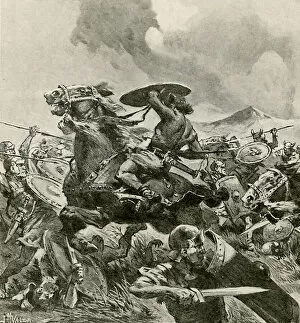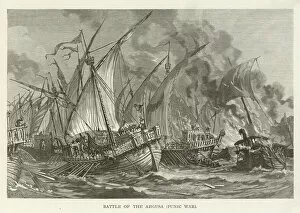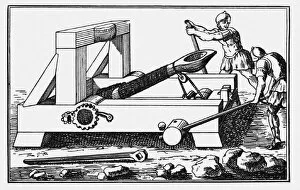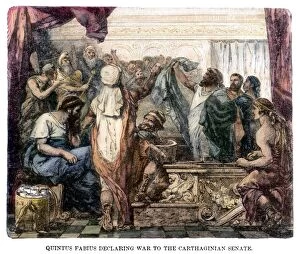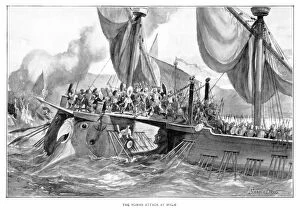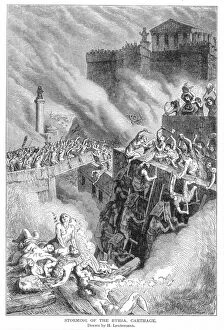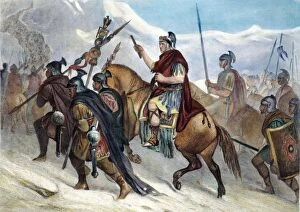Punic War Collection
"The Punic War: A Tale of Ancient Rivalry and Tragic Consequences" The Continence of Scipio, depicted in a stunning oil on canvas painting from 1650-55
For sale as Licensed Images
Choose your image, Select your licence and Download the media
"The Punic War: A Tale of Ancient Rivalry and Tragic Consequences" The Continence of Scipio, depicted in a stunning oil on canvas painting from 1650-55, showcases the virtuous character of Roman general Scipio Africanus. His self-control and honor during the war exemplify the values that shaped Rome's destiny. In contrast, Hannibal Triumphant stands as a marble statue from 1722, frozen in time to remind us of Carthaginian commander Hannibal Barca's strategic brilliance. This black and white photo captures his triumphant spirit that once threatened Rome's very existence. Another monochrome image reveals Hannibal himself, captured in stone. This ancient relic transports us back to his era, reminding us of his audacity and military prowess that shook the foundations of Rome. The Third Punic War is etched into history through an engraving from 1884 depicting the tragic suicide of the wife of a Carthaginian general. It serves as a haunting reminder that wars have devastating consequences not only for soldiers but also innocent civilians caught in its grip. A lithograph showcasing Romans battling Hannibal's army brings to life one of history's most epic clashes. The intensity captured within this artwork reflects the fierce determination displayed by both sides during their struggle for dominance. The Battle of Aegusa comes alive through an intricate engraving dating back to 241 BC during the First Punic War. This historical depiction allows us to witness firsthand how naval warfare played a pivotal role in shaping Mediterranean power dynamics. Archimedes Siege Catapult takes center stage with an anonymous artist capturing this ingenious invention described by Polybius in his Histories from 1727. Its presence reminds us that innovation often arises amidst chaos and conflict. Thomas Ralph Spence paints The Siege of Syracuse with vivid detail in 1895, transporting viewers into one city under siege by Roman forces.






